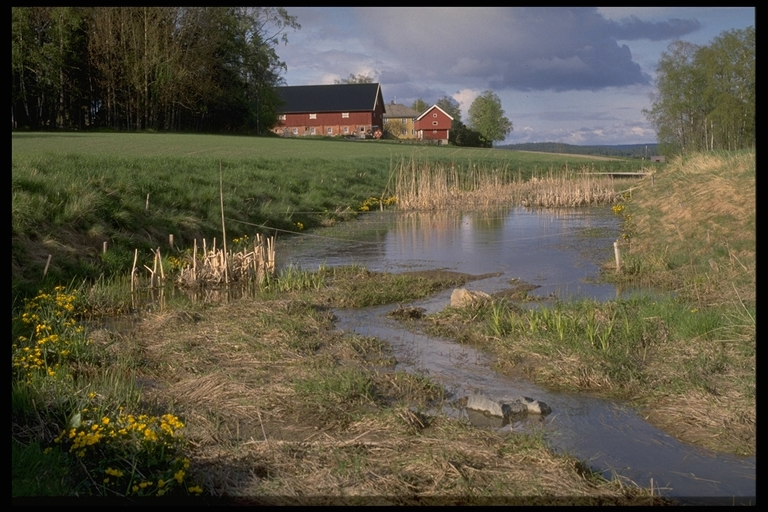Advancing constructed wetlands and carbon bioreactors to abate edge-of field nitrogen losses
Factors affecting nitrogen retention in small constructed wetlands treating agricultural non-point source pollution
Situation: Constructed wetlands can be used to mitigate pollution in watersheds. Often the goal of these wetlands is to reduce soil particles and phosphorus in the runoff from arable lands. In addition they may also have some effect on pesticides. This paper examines such wetlands for their ability to retain nitrogen (N) from inflow waters from agricultural areas.
Actions: Nitrogen retention was investigated in four surface-flow constructed wetlands in the temperate climate of Norway, with high hydraulic loading rates (0.7 – 1.8 m/day), due to small size (0.06 – 0.4 % of watershed). Long-term N retention measurements (from 3 to 7 years) were recorded in order to investigate the interaction between N retention efficiency and runoff from arable watersheds.
Take-home message: 
-
The total N retention in the four wetlands ranged from 3-15% (50-285 g N m-2 yr-1)
- The main retention process was sedimentation of N in organic particles, but denitrification was significant in wetlands with the lowest hydraulic loads.
- High hydraulic load and low temperatures contributed to the low N retention levels
- N retention decreased as the wetlands aged, most likely due to the trapped organic N being converted to inorganic N and then transported from the watershed.
- To increase N retention effectiveness, hydraulic load needs to be reduced – by creating larger constructed wetlands or situating the wetlands where they will not intercept high loads of pristine water.
For more information:
- Braskerud, B.C. 2002. Factors affecting nitrogen retention in small constructed wetlands treating agricultural non-point source pollution. Ecological Engineering (18): 351-370.
- Email B.C. Braskerud at bcb@nve.no